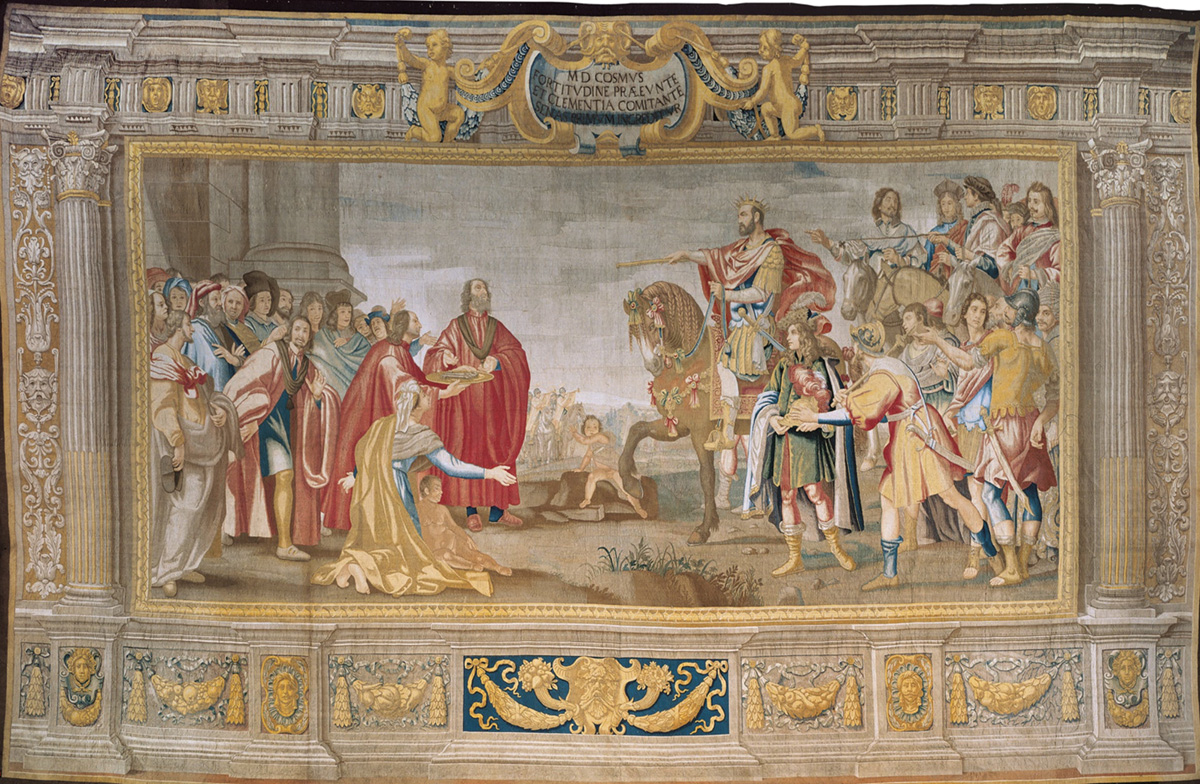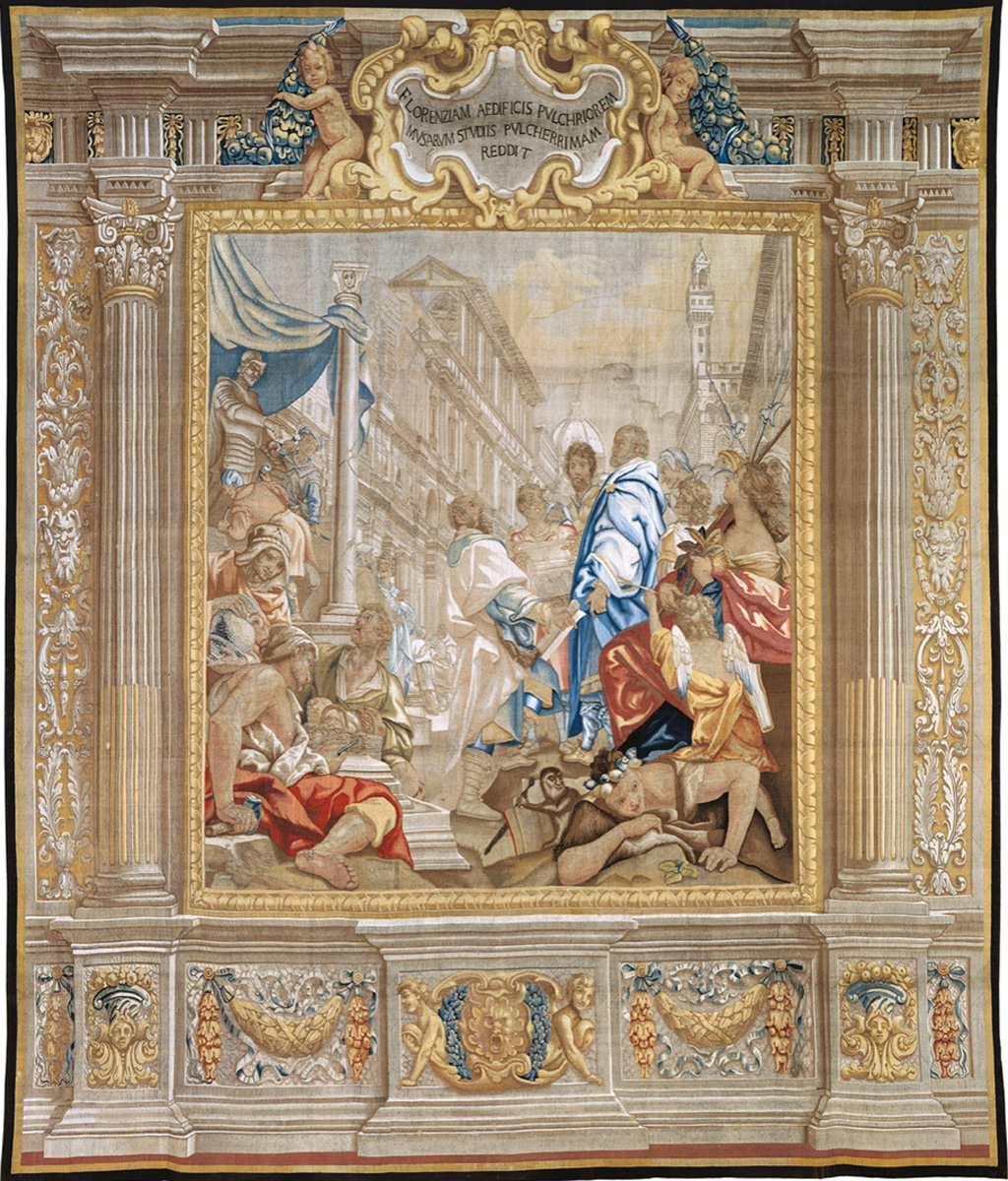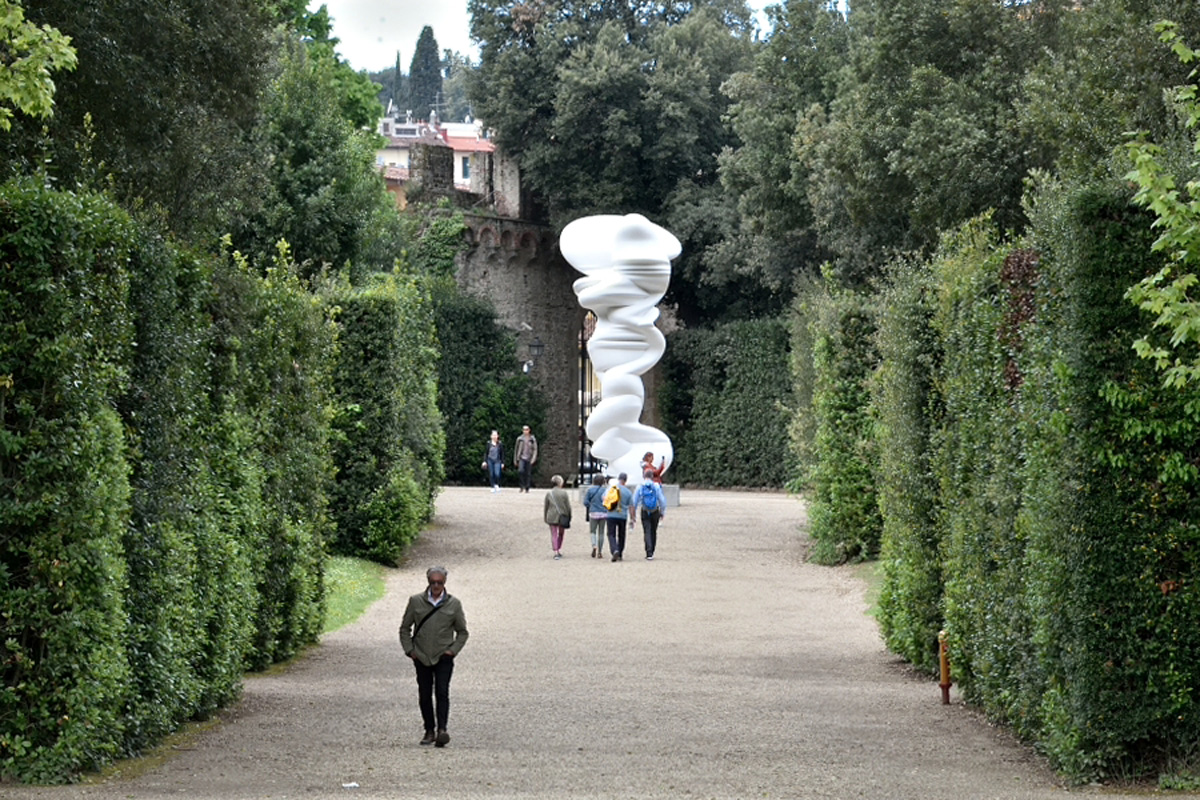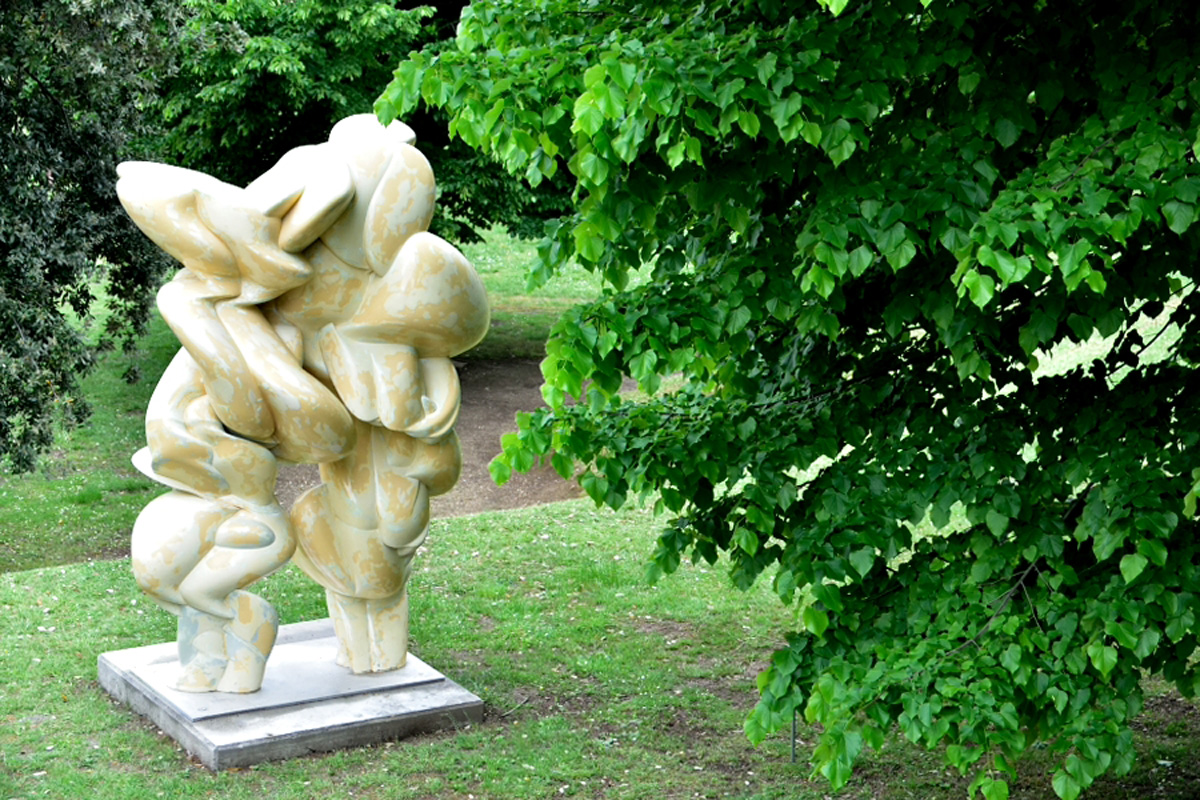Palazzo Pitti has a roster of top-tier events inside the palace and outside in the Boboli Gardens to celebrate the 500th anniversary of the birth of Cosimo I de’ Medici, the first Grand Duke of Florence, and to welcome in the warmer weather.
INSIDE
The salient moments of Cosimo I’s government are detailed in eight tapestries produced in two sets by the Medici tapestry manufactory under the direction of Pietro Févère, chief tapestry weaver.
The Stories of Cosimo I begin with the grand duke’s rise to power in 1537 and continue with his renovation of Pisa, conquest of Siena, extensions to Palazzo Vecchio and the construction of the Uffizi, his journey to Rome in 1560 to negotiate with Pope Pius IV, founding of the Order of the Knights of St. Stephen, financial aid to Catherine de’ Medici’s son King Charles IX of France in the latter’s struggle against heresy, and his conferring of the crown of Tuscany on Joanna of Austria when she married his heir, the future Grand Duke Francesco I, hence consolidating the political bond between the Houses of Medici and Habsburg. The episodes were probably chosen by Francesco Rondinelli, a man of letters and the author of the iconographical programme for Pietro da Cortona and Ciro Ferri’s decorations in the Sale dei Pianeti on Palazzo Pitti’s piano nobile. The cycle of tapestries, a woven biography, was designed for the Sala di Saturno, the heart of the sovereign’s power, used for the secret hearings of Grand Duke Ferdinando II, who sought to ennoble and impart legitimacy to his own governance with this commission that pays tribute to his illustrious predecessor.
Given you’re in the vicinity, pop outside to see the recently restored Peasant with a Barrel. Giovanni di Paolo’s sculpture was likely the first made specifically for the Boboli Gardens based on a design by his master Baccio Bandinelli by 1557 at the latest. It was intended as a tribute to the ducal couple and an incentive to visitors to explore that Cosimo and his consort Eleonora di Toledo held so dear.
Tribute to weaving a biography. Tapestries in honour of Cosimo I.
Sala Bianca + Sala delle Nicchie, Palazzo Pitti
June 6 to September 29
www.uffizi.it
OUTSIDE
Bright steel geysers stand out against the sky of Florence, bronze stalagmites of prehistoric appearance and gigantic resin flowers sprout out of the gravel and among the hedges, colossal and candid stems, hilly eruptions and elliptical shapes, colossal interweaving of imaginary fossil forests, metal flows that shake, twist and fold, caught in the last soft phase before solidification: Tony Cragg’s monumental sculptures offer an unexpected dialogue, between associations and dissonances, with the orderly nature of the Boboli Gardens and the cityscape, between their layered, fragile and organized historical fabric, and the primordial force of the sculptural material.
The exhibition Tony Cragg at Boboli Gardens presents 16 works by the Liverpool-born master, scattered in some of the most striking spots in the garden. It is as if the unexpected plastic presences that suddenly appear in Boboli’s open spaces—near the Grotta del Buontalenti, in the Anfiteatro and in front of the Palazzina della Meridiana—reveal the energy and the irrepressible underground force of these hills, familiar and comforting views, ordered by architects and gardeners over the centuries. But here, with Cragg’s sculptures, matter joins history, displacing us. The role that Tony Cragg attaches to sculpture is precisely this: starting from an incessant and restless exploration of matter and its relationship with the environment that surrounds us, new meanings, dreams and languages emerge.
“This is the first time that a main Italian museum has dedicated a monographic exhibition to Tony Cragg,” comments Eike Schmidt, director of the Uffizi Galleries. “The Boboli Gardens, with their natural wonders, works of ancient art and highly rational structure, are the perfect theatre for this exhibition. In fact, the theme of sculpture in the park, central to the artist’s poetics, necessarily includes forms inspired by nature and its mysterious power, created by Cragg to provoke a strong reaction in the observer, whether it be pure emotion or intellectual interpretation.”
Born in 1949, Tony Cragg has lived and worked in Wuppertal, Germany, since 1977. He has received important awards and honours including the prestigious Turner Prize (1988), Shakespeare Prize (2001) and the Praemium Imperiale for Sculpture (2007).
Tony Cragg at the Boboli Gardens
Giardino di Boboli, Florence
Until October 27
www.uffizi.it












